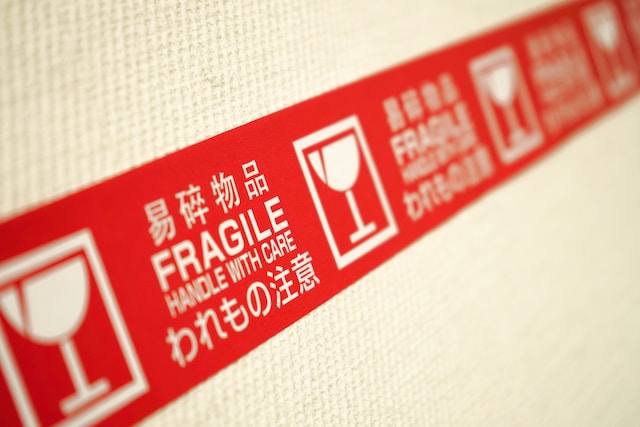Introduction
In the fast-paced and competitive landscape of modern industries, efficient and accurate labeling solutions have become essential for businesses across the board. Labels serve as critical identifiers, providing crucial information about products, packages, and assets. From manufacturing to healthcare, from retail to logistics, labeling plays a pivotal role in ensuring smooth operations and complying with regulatory standards. This blog post will explore the significance of labeling solutions for various industries and how businesses can leverage them to streamline their processes, enhance brand reputation, and increase customer satisfaction.
I. Understanding the Importance of Labels
1. What Are Labels and Why Do They Matter?
- Labels are informative tags attached to products or packages, containing essential details such as product name, ingredients, manufacturing date, expiration date, barcodes, and more.
- They play a key role in product identification, inventory management, and supply chain operations.
- Labels contribute to consumer safety and help businesses meet legal and regulatory requirements.
2. The Impact of Labels on Branding and Customer Perception
- Well-designed labels are powerful marketing tools that influence brand recognition and customer loyalty.
- Creative and appealing labels can set products apart from competitors and leave a lasting impression on consumers.
- How labels can communicate brand values and evoke emotions, ultimately influencing purchasing decisions.
II. Challenges Faced in Labeling Across Industries
1. Compliance and Regulatory Standards
- Different industries must comply with specific labeling regulations set by governing bodies.
- Failure to meet these standards can result in legal penalties, product recalls, and damage to a company’s reputation.
- How labeling software can help automate compliance checks and ensure adherence to regional and global regulations.
2. Labeling in Supply Chain Management
- Complex supply chains require accurate and efficient labeling at every stage.
- The challenge of maintaining consistency in labeling across multiple locations and partners.
- The role of labeling solutions in improving traceability and reducing errors during transportation and warehousing.
3. Dynamic Product Labeling in Manufacturing
- Manufacturers deal with a wide range of products, each with unique labeling requirements.
- The need for dynamic labeling solutions that can adapt to various product specifications.
- The advantages of automated labeling systems in boosting productivity and minimizing human errors.
4. Language and Localization Challenges
- Global companies catering to diverse markets face language translation and localization challenges.
- The importance of multilingual labels in reaching international customers.
- How labeling solutions with language support can overcome communication barriers and expand global reach.
III. Common Labeling Solutions and Technologies
1. RFID (Radio-Frequency Identification) Labels
- RFID labels utilize radio waves to track and identify products, assets, and shipments.
- The benefits of RFID in real-time inventory management and supply chain visibility.
- Applications of RFID labels in retail, healthcare, and manufacturing industries.
2. Barcode and QR Code Labels
- Widely adopted for their simplicity and cost-effectiveness, barcode and QR code labels are ubiquitous in various sectors.
- The use of QR codes in enabling interactive consumer experiences and marketing campaigns.
- How these labels facilitate quick and accurate data capture, streamlining operations and enhancing productivity.
3. Digital Label Printing Solutions
- Traditional label printing methods are being replaced by digital printing for greater flexibility and customization.
- Advantages of digital printing, such as rapid turnaround times and reduced setup costs.
- Real-life examples of industries benefitting from digital label printing technology.
4. Cloud-Based Label Management Systems
- Cloud-based label management systems offer centralized control and real-time updates.
- Enhanced security measures and disaster recovery capabilities provided by cloud solutions.
- The ease of collaboration among teams, suppliers, and partners through cloud-based labeling.
IV. Implementing Labeling Solutions: Best Practices
1. Assessing Business Requirements
- Conducting a thorough analysis of labeling needs and challenges specific to the industry.
- Identifying critical data to be included in labels and the desired level of automation.
- Considering future scalability and integration with existing systems.
2. Choosing the Right Labeling Software
- Evaluating labeling software options based on features, compatibility, and user-friendliness.
- The importance of software that supports various label formats and printing technologies.
- Implementing a user-friendly interface to empower employees with minimal training requirements.
3. Customizing Labels for Branding and Compliance
- Balancing creativity with regulatory requirements in label design.
- Utilizing branding elements and visual cues to enhance brand recognition.
- How to ensure labels meet industry-specific regulations and international standards.
4. Integrating Labeling with ERP and PLM Systems
- Integrating labeling solutions with Enterprise Resource Planning (ERP) and Product Lifecycle Management (PLM) systems.
- The benefits of seamless data exchange and real-time updates throughout the supply chain.
- Case studies of successful integration leading to improved efficiency and reduced errors.
V. Future Trends in Labeling Solutions
1. AI and Machine Learning in Labeling
- The role of AI and machine learning in automating label design and compliance checks.
- How AI-driven predictive analytics can optimize labeling processes and reduce waste.
- A glimpse into the future of self-learning label management systems.
2. Sustainable Labeling Practices
- Increasing environmental consciousness calls for eco-friendly labeling solutions.
- Adopting recyclable materials and biodegradable labels to reduce the carbon footprint.
- The positive impact of sustainable labeling on brand reputation and customer loyalty.
3. Augmented Reality Labels
- The integration of augmented reality technology into product labels.
- Enhancing consumer engagement and product information through interactive AR experiences.
- Examples of brands using AR labels to create immersive and memorable customer interactions.
4. Blockchain for Labeling Transparency
- Leveraging blockchain technology to create an immutable record of the label’s journey from production to consumption.
- The benefits of enhanced transparency, traceability, and anti-counterfeiting measures.
- How blockchain labeling can foster trust between brands and consumers.
Conclusion
As industries continue to evolve and consumer demands grow, labeling solutions will play an increasingly crucial role in business success. From ensuring compliance to elevating brand image, labeling serves as the bridge between businesses and their customers. By understanding the importance of labels, addressing industry-specific challenges, adopting appropriate labeling technologies, and preparing for future trends, companies can unlock the full potential of effective labeling solutions.



